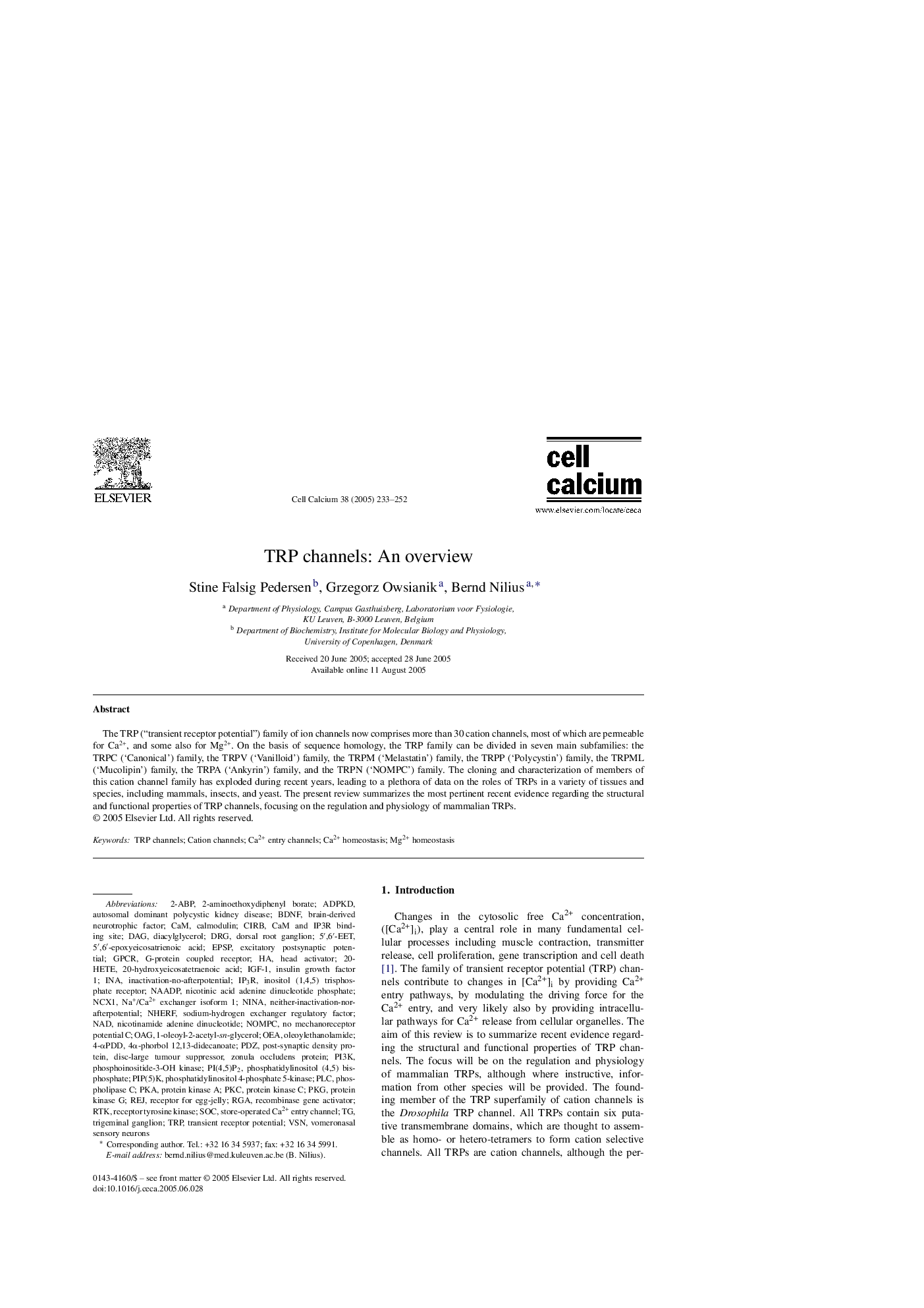| Article ID | Journal | Published Year | Pages | File Type |
|---|---|---|---|---|
| 9911938 | Cell Calcium | 2005 | 20 Pages |
Abstract
The TRP (“transient receptor potential”) family of ion channels now comprises more than 30 cation channels, most of which are permeable for Ca2+, and some also for Mg2+. On the basis of sequence homology, the TRP family can be divided in seven main subfamilies: the TRPC ('Canonical') family, the TRPV ('Vanilloid') family, the TRPM ('Melastatin') family, the TRPP ('Polycystin') family, the TRPML ('Mucolipin') family, the TRPA ('Ankyrin') family, and the TRPN ('NOMPC') family. The cloning and characterization of members of this cation channel family has exploded during recent years, leading to a plethora of data on the roles of TRPs in a variety of tissues and species, including mammals, insects, and yeast. The present review summarizes the most pertinent recent evidence regarding the structural and functional properties of TRP channels, focusing on the regulation and physiology of mammalian TRPs.
Keywords
Head activatorNAADPOAGPKG2-aminoethoxydiphenyl boratePI3KPDZIP3RPKCADPKDRTKPLCGPCR20-HETENCX1IGF-1NHERFoleoylethanolamideMg2+ homeostasisVSNDRG1-Oleoyl-2-acetyl-sn-glycerolREJpKaTrpNompCdorsal root ganglion20-Hydroxyeicosatetraenoic acid4α-phorbol 12,13-didecanoateBDNFEPSPG-protein coupled receptorINaOEAPI(4,5)P2nicotinic acid adenine dinucleotide phosphateautosomal dominant polycystic kidney diseasediacylglycerolRgaDAGCAMSOCInsulin growth factor 1Brain-derived neurotrophic factorPhosphatidylinositol 4-phosphate 5-kinasePhosphatidylinositol (4,5) bisphosphatephospholipase CNADnicotinamide adenine dinucleotideCa2+ homeostasisexcitatory postsynaptic potentialtransient receptor potentialprotein kinase Aprotein kinase GProtein kinase CCalmodulinTRP channelsCation channelstrigeminal ganglionReceptor Tyrosine Kinase
Related Topics
Life Sciences
Biochemistry, Genetics and Molecular Biology
Cell Biology
Authors
Stine Falsig Pedersen, Grzegorz Owsianik, Bernd Nilius,
